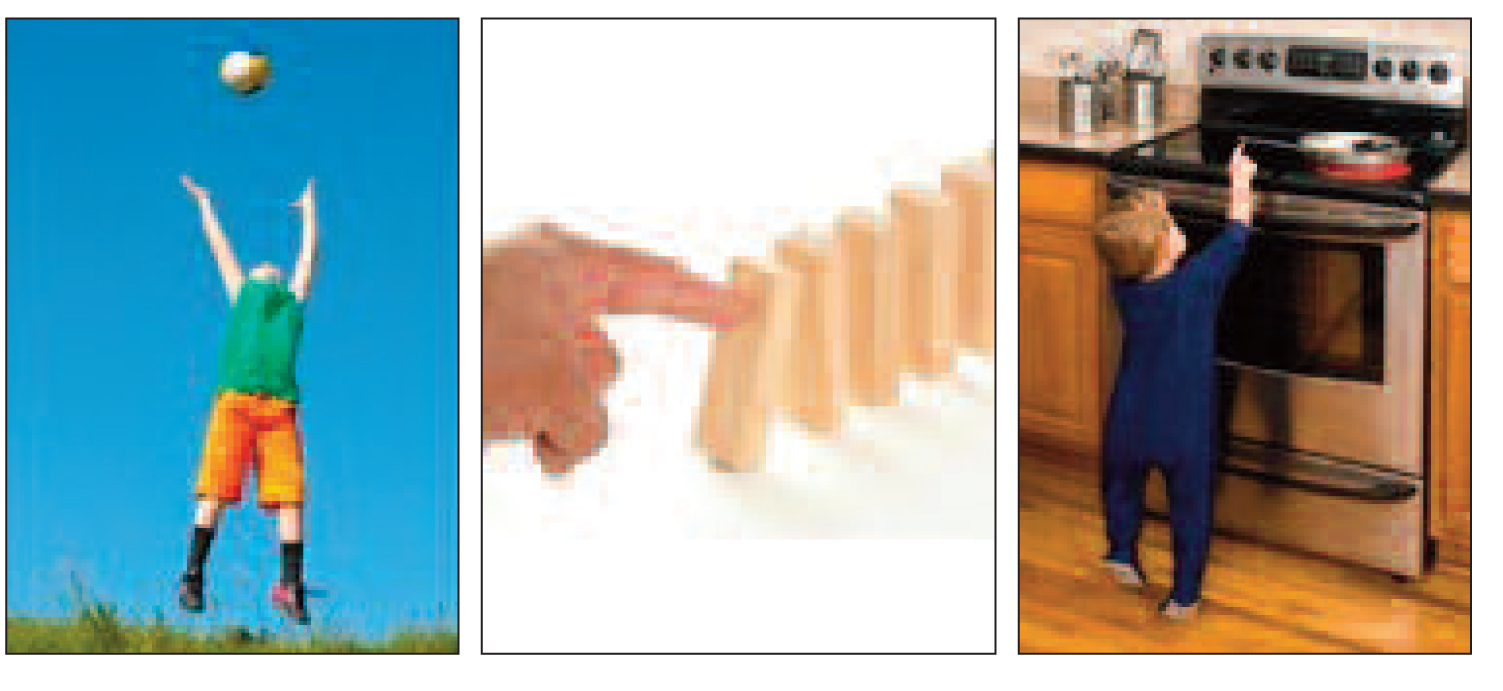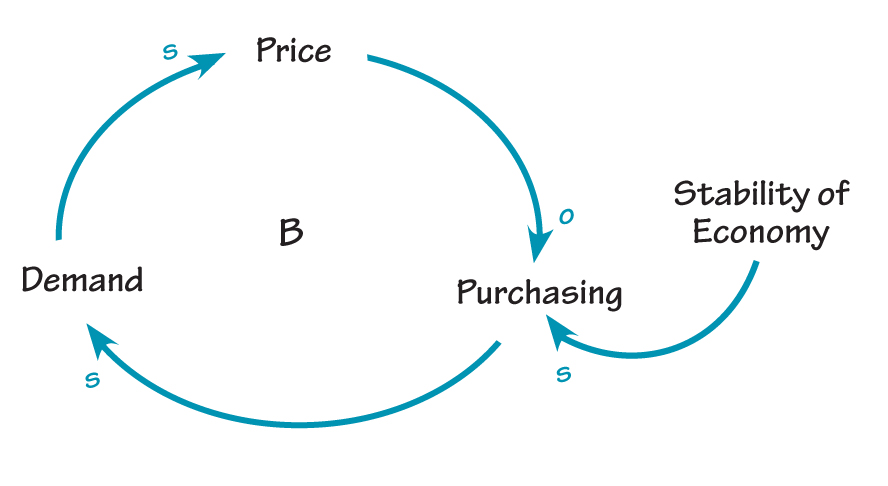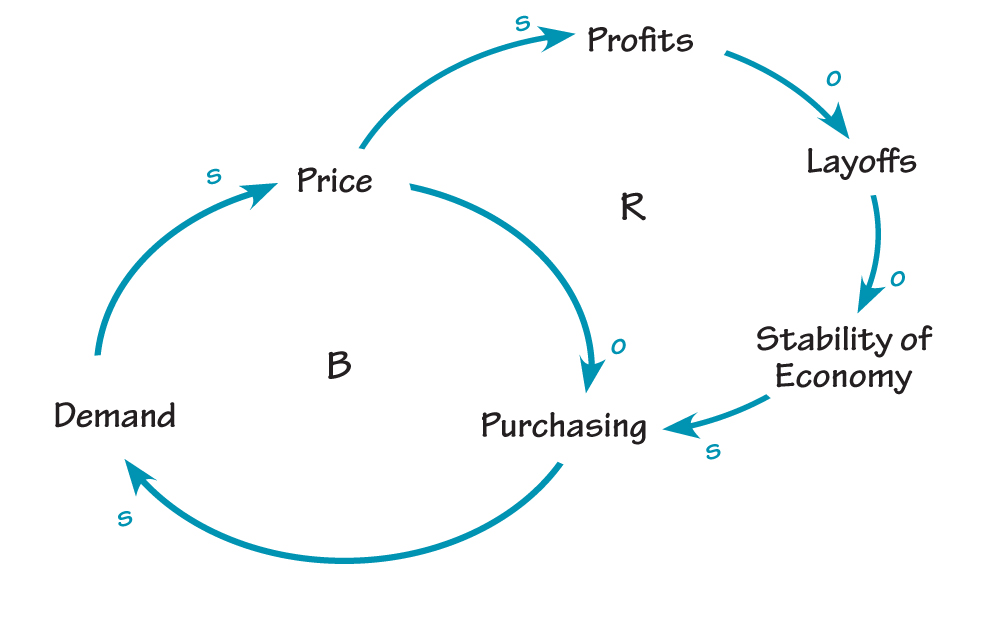In writing and teaching people about systems thinking, my colleagues and I at I see systems often refer to “mental models.” For some people, this comes as a bit of a surprise, because the context usually involves building models with the I Think or STELLA software. They don’t expect us to start talking metaphysically about thinking. “Is this about philosophy or modeling software?” they may wonder. The fact is that the software is actually a tool to help construct, simulate, and communicate mental models.
Defining the Terms
Let’s define the term model: A model is an abstraction or simplification of a system. Models can assume many different forms—from a model volcano in a high school science fair to a sophisticated astrophysical model simulated using a supercomputer. Models are simplified representations of a part of reality that we want to learn more about. George Box stated:, “Essentially, all models are wrong, but some are useful.” They are wrong because they are simplifications, and they can be useful because we can learn from them.
TEAM TIP
The Fifth Discipline Fieldbook includes material about two tools for understanding our mental models: the “Ladder of Inference” and the “Left-Hand Column.”
So, what is a “mental model”? A mental model is a model that is constructed and simulated within a conscious mind. To be “conscious” is to be aware of the world around you and yourself in relation to the world. Let’s take a moment to think about how this process works operationally.
Imagine that you are standing outside

Imagine that you are standing outside, looking at a tree. What happens? The lenses in your eyes focus light photons onto the retinas. The photosensitive cells in your retinas respond by sending neural impulses to your brain. Your brain processes these signals and forms an image of the tree inside your mind.
So at this point, we’ve only addressed the mechanisms by which you perceive the tree. We have not addressed understanding what a tree is or considered changes over time. We are dealing with visual information only. There is nothing within this information that tells you what a tree actually is.
What makes the image of a tree in your minds click as an actual tree that exists right there in front of you? This is where mental models kick in, and you start to think about the tree. The tree is actually a concept of something that exists in physical reality. The “tree concept” is a model. Understanding the concept of a tree requires more information than is available through sensory experience alone. It’s also built on past experiences and knowledge.
A tree is a plant. It is a living thing that grows and changes appearance over time, often with the seasons. Trees have root systems. Trees use leaves for photosynthesis. Wood comes from trees. I can state these facts confidently because I have memories and knowledge of trees within my mental models. Mental models contain knowledge and help us create new knowledge.
Simulating with Our Minds
Take a look at the images below for a few moments and then think about what is happening inside your mind as you look at them.
My guess is that, with each image, you thought about what happens next. The images don’t show you what happened next, but you can probably make a pretty good guess. This guess is
Simulating with Our Minds

the result of simulating a mental model of what is depicted. And, you can simulate different outcomes. In the image on the right, I like to simulate a parent rushing into the scene and scooping up the child before he gets burned.
When we think about the boy catching the ball, the blocks knocking one another over, and the toddler getting burned, we are applying knowledge that we hold in our minds to help us simulate a mental model of what is depicted in the image. This is all going on subconsciously, so we’re really not aware of it as it is happening.
Thinking About Systems
The human mind is very good at simulating mental models of our immediate physical reality. Things get harder when we start thinking about abstract systems.
A market is a good example of an abstract system. In a market system, price acts as a signal of aggregate demand for a commodity. You can’t “see” a market like you can “see” a tree in front of you. A market does not exist in a particular physical location. A market is an abstract concept that exists in the collective minds of all who participate in it. Even though markets do not exist physically, they have an enormous impact on our lives nonetheless.
PRICE DEFLATION LOOP

When the global economic crisis hit, people started saving money instead of spending it. Retailers in turn dropped prices to boost consumer spending. But when consumers saw prices dropping rapidly, they delayed purchases in the hope of achieving additional savings—leading to a price deflation loop.
When the global economic crisis hit in late 2008, retailers began to struggle financially because consumer purchases declined rapidly. People were worried about the economy and started saving money instead of spending it. This started happening just before the holiday shopping season—a make-or break period for many retailers. So, in an effort to boost demand, retailers began dropping prices (see “Price Deflation Loop”).
This process led to price deflation, because consumers saw prices dropping rapidly and began delaying purchases as a result. The outcome of simulating their mental models of the market informed their decision making: “I should wait to buy this because the price keeps dropping.”
This mental model paints a pretty picture for consumers over the short term: low prices in a down economy. As the deflationary dynamics play out over the long term, however, the picture becomes bleak. As prices spin downward, profits decline, and businesses are forced to lay off workers or close up shop entirely. As unemployment increases, consumers’ perception of the stability of the economy decreases, and they spend even less (see “Economic Stability Loop”).
Economists and policy makers use sophisticated computer models to help them understand markets. Consumers, on the other hand, use simple mental models when making purchasing decisions. The more sophisticated models inform policy makers of the long-term consequences of consumers’ reduction in spending, so they react by trying to jump-start spending with stimulus programs. In the U. S., we’ve seen a few of these programs during 2009: the “Cash for Clunkers” rebate program, the first-time home buyer tax credit, and the social security payroll tax cut.
ECONOMIC STABILILTY LOOP

As the deflationary dynamics play out over the long term, the picture becomes bleak. As prices spin downward, profits decline and businesses are forced to lay off workers or close up shop entirely. As unemployment increases, consumers’ perception of the stability of the economy decreases and they spend even less.
Complex Systems
Often, it is hard for us to define the optimal boundaries for a mental model. We tend to have a narrow focus and act on short-term dynamics within our mental models. For example, in the model above, our understanding changes when we expand the boundaries to include profits and layoffs.
However, we are generally not very good at mentally simulating complex systems with interdependencies, lots of variables, and delays. This is where software steps in. Using systems thinking software, we can transform our mental models into operational models that we can simulate more reliably using a computer. Doing so not only helps us create new knowledge and understanding, but also helps us construct better mental models in the future.
We’ll explore the role of software in constructing, simulating, and communicating mental models in part two of this series.
For more on using modeling and simulation to understand the economic crisis, see the “Understanding the Economic Crisis” video presentation.
